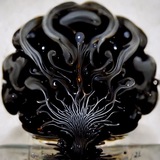Punch to face project
The team of Punch To Face (supported by ODS.ai) is bringing AI to the sports channels. The main goal of the project is a full 3D reconstruction of MMA fights in Virtual Reality.
Youtube: https://youtu.be/l_4FK8nBmEA
Story on Twitter: https://twitter.com/punch_to_face/
#CV #3D #AR #VR
The team of Punch To Face (supported by ODS.ai) is bringing AI to the sports channels. The main goal of the project is a full 3D reconstruction of MMA fights in Virtual Reality.
Youtube: https://youtu.be/l_4FK8nBmEA
Story on Twitter: https://twitter.com/punch_to_face/
#CV #3D #AR #VR
YouTube
May 2020 - demo video: our current techniques and some tricks from research.
https://punchtoface.com/
We are looking for partners to cover our backs and accelerate our growth! If you are interested in collaborating with us, please, send us an e-mail to the following address:
welcome@punchtoface.com
If you like what we are doing…
We are looking for partners to cover our backs and accelerate our growth! If you are interested in collaborating with us, please, send us an e-mail to the following address:
welcome@punchtoface.com
If you like what we are doing…
PIFuHD: Multi-Level Pixel-Aligned Implicit Function for High-Resolution 3D Human Digitization
Authors suggest an approach to the single image 3D shape reconstruction of a human body. The approach leverages representation from (1), that authors argue to be capable of processing high-resolution input images up to 1024 by 1024px.
The main idea of PIFu (1) is to represent a 3D shape as a function that defines the surface and the texture (both being parametrized by the MLP). This allows not to store the whole 3D volume as in voxel-based methods, but one can easily convert this representation to a mesh via a marching cube algorithm. Despite being more memory efficient, (1) still was not able to operate on the resolutions higher than 512 by 512px
Authors suggest an idea that pushes (1) even further, allowing to process images up to 1024 by 1024. They design a two-level pipeline with two PIFu modules, one for coarse shape estimation that operates on 512 by 512 px image and another one for fine-grained prediction, which takes 1024 by 1024px as an input as well as the features from the coarse level.
The model needs ground truth 3D poses thus authors use RenderPeople (2) dataset of 500 3D human models.
Paper: https://arxiv.org/pdf/2004.00452.pdf
Code: https://github.com/facebookresearch/pifuhd
Project: https://shunsukesaito.github.io/PIFuHD/
Colab: https://colab.research.google.com/drive/11z58bl3meSzo6kFqkahMa35G5jmh2Wgt
(1) Saito, S., Huang, Z., Natsume, R., Morishima, S., Kanazawa, A., & Li, H. (2019). Pifu: Pixel-aligned implicit function for high-resolution clothed human digitization. In Proceedings of the IEEE International Conference on Computer Vision (pp. 2304-2314).
(2) https://renderpeople.com/3d-people/
#3d #reconstruction #humandigitalization #singleimage
Authors suggest an approach to the single image 3D shape reconstruction of a human body. The approach leverages representation from (1), that authors argue to be capable of processing high-resolution input images up to 1024 by 1024px.
The main idea of PIFu (1) is to represent a 3D shape as a function that defines the surface and the texture (both being parametrized by the MLP). This allows not to store the whole 3D volume as in voxel-based methods, but one can easily convert this representation to a mesh via a marching cube algorithm. Despite being more memory efficient, (1) still was not able to operate on the resolutions higher than 512 by 512px
Authors suggest an idea that pushes (1) even further, allowing to process images up to 1024 by 1024. They design a two-level pipeline with two PIFu modules, one for coarse shape estimation that operates on 512 by 512 px image and another one for fine-grained prediction, which takes 1024 by 1024px as an input as well as the features from the coarse level.
The model needs ground truth 3D poses thus authors use RenderPeople (2) dataset of 500 3D human models.
Paper: https://arxiv.org/pdf/2004.00452.pdf
Code: https://github.com/facebookresearch/pifuhd
Project: https://shunsukesaito.github.io/PIFuHD/
Colab: https://colab.research.google.com/drive/11z58bl3meSzo6kFqkahMa35G5jmh2Wgt
(1) Saito, S., Huang, Z., Natsume, R., Morishima, S., Kanazawa, A., & Li, H. (2019). Pifu: Pixel-aligned implicit function for high-resolution clothed human digitization. In Proceedings of the IEEE International Conference on Computer Vision (pp. 2304-2314).
(2) https://renderpeople.com/3d-people/
#3d #reconstruction #humandigitalization #singleimage
